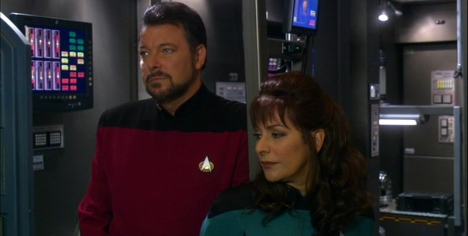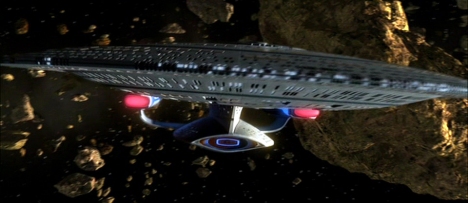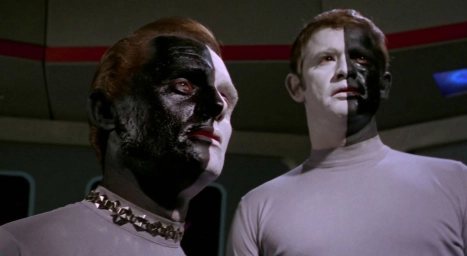This May, we’re taking a look at the fourth (and final) season of Star Trek: Enterprise. Check back daily for the latest review.
1994 was peak Star Trek.
Of course, the particulars are open to debate. There are credible arguments that could be made for the following year, when Paramount considered broadcasting Caretaker to be just about the only statement that UPN needed to make on it opening night. There are even plausible arguments that could be made about the year after that, when the franchise officially celebrated its thirtieth anniversary with a beloved movie, two anniversary episodes and a whole host of affection press coverage.

“So, I’ve been Netflixing Enterprise, and the final two seasons are REALLY good.”
Nevertheless, it all seems to come down to 1994. That was the year that Star Trek: The Next Generation came to an end. It was the only season of Star Trek overseen by Rick Berman to by nominated for Outstanding Drama Series at the Prime-Time Emmy Awards. It was the point at which the original Star Trek cast were retired, with William Shatner officially passing the torch to Patrick Stewart before a bridge fell on him in Star Trek: Generations. At the same time, Star Trek: Deep Space Nine was in its second season. Star Trek: Voyager was ready to launch.
More importantly, that season of television represented the turning point for the franchise’s ratings. While The Next Generation actually experienced its highest viewing figures during its fourth and fifth seasons, the end of The Next Generation with its seventh season signaled a gradual erosion of the franchise’s viewing base. There are lots of reasons for this that have nothing to do with quality and more to do with the realities of network television, but this simple fact helps to solidify the feeling that the final season of The Next Generation was something of a golden age.

An Enterprising couple.
It could legitimately be argued that the Berman era was haunted by the spectre of 1994 for the longest of times. Ironically enough for a show set on a space station, Deep Space Nine managed to chart its own course only to end up isolated from the franchise around it. While Deep Space Nine would end up an evolutionary dead-end for the franchise, the seven seasons of Voyager and the first two seasons of Star Trek: Enterprise would find the franchise trapped within a phantom version of 1994 that seemed to last forever.
Enterprise finally escaped the long cold shadow of The Next Generation with the broadcast of The Expanse at the end of its second season. The final two seasons of Enterprise would find the show experimenting and innovating with new narrative forms and new approaches to the franchise. The third season of Enterprise finally allowed Brannon Braga to follow through on his original pitch for Year of Hell, Part I and Year of Hell, Part II. The fourth season largely eschewed episodic plotting for multi-episode arcs excavating the canon.

“C’mon, you didn’t think they’d let Enterprise finish without a holodeck episode, did you?”
Perhaps that is why These Are the Voyages… is so shocking, beyond the myriad of minor complaints. These Are the Voyages… takes the franchise right back to 1994 as if the evolutionary leaps of the prior two seasons never took place. The episode invites the audience to wonder whether it might all be a dream, a fantasy playing out on the holodeck to help Riker pass the time. After all, the episode does not close in the twenty-second century with the decommissioning of Enterprise; the episode closes with Riker and Troi right back in 1994.
That is the true heartbreaking tragedy of These Are the Voyages… No matter how far the Berman era might come, it can never escape 1994.

Warp speed ahead…
Continue reading →
Filed under: Enterprise | Tagged: Andorian, Deanna Troi, Encounter at Farpoint, Holodeck, jean-luc picard, Jonathan Archer, Marina Sirtis, picard, Star Trek Next Generation, star trek: the original series, William Riker | 43 Comments »






































